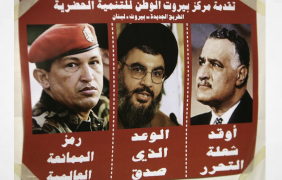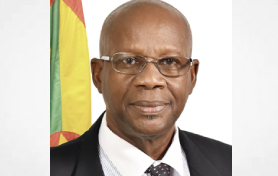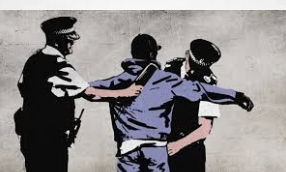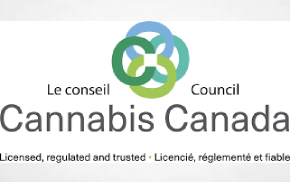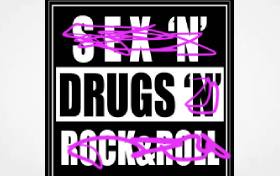Ok this is published in an outlet called oilprice.com so they will have a certain outlook on the world but i thought the article was worth highlighting simply because this is the 2nd time in a week the issue of Hezbollah in South & Central America has popped up.
First here..
Hezbollah denies links to drug kingpin killed in Syria..”We don’t smuggle drugs, we smuggle weapons,
and now in OilPrice who write….
- Hezbollah operates a sophisticated network in South America, carrying out terrorist attacks and engaging in criminal activities like drug trafficking and money laundering.
- Venezuela, under President Maduro, has become a safe haven for Hezbollah, offering logistical support and fostering close ties.
- Stricter sanctions on Venezuela could push the country further into illicit economies, benefiting Hezbollah and destabilizing the region.
After Hamas’ savage October 2023 assault on Israel which claimed 1,200 lives, mostly civilians, Hezbollah ramped up its confrontational posture, sparking fears of further terror attacks. The militant Lebanese political group, for decades, has acted as a powerful proxy actor for Iran’s theocratic regime. Hezbollah, which the U.S. designated as a foreign terrorist organization in 1997, earned a menacing reputation for bombing civilian targets and involvement in a host of criminal activities, notably narcotics and arms trafficking as well as money laundering. Hezbollah’s sizable but overlooked presence in Latin America poses significant risks. It gives the militants access to lucrative illicit economies along with the ability to strike soft targets in a region lacking robust counter-terrorism capabilities. In the wake of Venezuelan President Nicolas Maduro’s fraudulent electoral victory, Hezbollah will expand its South American presence as Iran ramps up support for the murderous regime to counter stricter U.S. sanctions.
Hezbollah participates in a host of criminal and terrorist activities across Latin America. Among the Shiite militant’s most notorious terrorist attacks in the region is the 1992 suicide bombing of Israel’s Embassy in Buenos Aires Argentina, where nine embassy personnel and scores of civilians were killed. Then there was the 1994 attack on Buenos Aires’s AMIA Jewish community center where a suicide bomber claimed 85 lives and left hundreds injured, making it Argentina’s deadliest-ever terrorist attack. It is speculated that Hezbollah, along with Brazilian organized crime groups (Spanish), masterminded the May 2022 murder of Paraguayan organized crime prosecutor Marcelo Pecci while he was holidaying in Cartagena Colombia. Brazilian authorities, in cooperation with Israeli intelligence, recently uncovered a Hezbollah network that was planning to attack Jewish targets in Latin America’s largest country.
Those events underscore the sophisticated nature of Hezbollah’s South American networks and the destabilizing influence they inflict on a politically volatile and vulnerable region. For decades, allegations have swirled over Hezbollah’s operation of training camps in South America and deep involvement in the continent’s cocaine trade, particularly in the Tri-State area a globally recognized hub for illicit economies. Over the last 20 years criminal activities, especially cocaine trafficking and money laundering have emerged as key sources of income for Hezbollah. It is inevitable that the Shiite militia would engage in such a lucrative activity with a global market valued at north of $100 billion annually. As a result, it is believed that Hezbollah has emerged as a major player in Europe’s cocaine trade which is valued at up to $12 billion each year. Estimates vary but cocaine smuggling is thought to generate up to three hundred million dollars annually for Hezbollah. This makes narcotics trafficking the second largest source of revenue for the Lebanese militia which is only surpassed by Teheran’s funding believed to be worth $700 million annually.
South America’s lawless Tri-Border area was at the center of Hezbollah’s criminal network for decades, but the rapidly growing importance of cocaine trafficking for its finances saw the terrorists expand into South America’s Northern Andean countries of Colombia, Ecuador, and Venezuela. You see, strife-torn Colombia is the world’s largest cocaine producer, while Venezuela and Ecuador are key international transshipment hubs. The dismantling of Hezbollah’s narcotics and money laundering networks in the Tri-Border area by the U.S. Drug Enforcement Agency (DEA) incentivized the militants to relocate the center of operations to Northern South America. This was given further momentum by lawlessness in Colombia, which is locked in a multi-decade low-level asymmetric conflict, and Venezuela, where Hugo Chavez’s 1999 Bolivarian revolution triggered democratic backsliding and widespread corruption.
The large Lebanese and Shiite Muslim diasporas in Colombia and Venezuela provide readily exploitable communities for Hezbollah to infiltrate. The radical Lebanese Shiite militants do this by leveraging family ties to build networks of legitimate and illicit businesses which are used to generate income and launder the proceeds of crime to fund operations in the Middle East. Colombia, as the world’s largest cocaine producer, is particularly important to Hezbollah because the Andean country’s long history of weak central governments and lawlessness has allowed illegal armed groups to flourish. The tremendous profits generated by cocaine production are responsible for financing Colombia’s nearly 70-year-long low-intensity armed conflict. According to the United Nations Office On Drugs And Crime (UNODC) 2022 cocaine production hit an all-time high of 1,738 metric tons, which is a whopping 24% increase compared to 2021. This sparked fears that cocaine shipments from Colombia would outstrip oil seeing the narcotic become the Andean nation’s top export.
Soaring cocaine production is not only responsible for funding illegal armed groups that are challenging the government and soaring rural violence but also attracts the attention of transnational criminal syndicates like Hezbollah. The Lebanese militants forged connections with various Colombian illegal armed groups involved in the cocaine trade, notably the Oficina de Envigado, Gaitanist Self-Defense Forces of Colombia (AGC – Spanish initials), and Revolutionary Armed Forces of Colombia (FARC – Spanish initials). After the 2016 FARC peace accord, Hezbollah went on to forge relationships with dissident bands that rejected the deal. Colombia’s leftist guerillas for decades operated along the porous border with Venezuela, where they continue to maintain a significant presence to this day.
After Chavez assumed office and initiated his socialist Bolivarian revolution in February 1999 Caracas cultivated relationships with Colombia’s leftist FARC and National Liberation Army (ELN – Spanish initials) guerillas. The leftist regime went on to provide arms, logistical support, and safe havens in Venezuela to Colombia’s leftist guerillas. Following the 2016 peace accord, dissident FARC bands and elements of the ELN went on to expand their operations in Venezuela, notably in cocaine trafficking, extortion, and illegal gold mining, as the rule of law and government control in remote regions broke down. This allowed those illegal armed groups to operate with impunity while amassing considerable wealth and power, to the point where they provided basic public services to communities in the areas abandoned by Caracas. The Chavez regime went on to foster associations with other U.S.-designated foreign terrorist organizations and armed groups, notably Hezbollah.
